|
III.
|

|
To arrive at a just and comprehensive understanding of any artist's talent,
it is often necessary to examine him in more than one example, according to the
scope his fancy may take, in the adaptation of his powers to a varied range of
subjects. Consequently, when a name reappears in these pages, the reader can refer,
for general biographical information, to the part in which it was first mentioned,
as in the present case of William Kray, the initial specimen of whose brush was
presented in part II. In this example, "The Water-Nixes' Victim," while the material
is derived from the same romantic source as the one previously given,
it is entirely different in character of subject and in treatment.
|
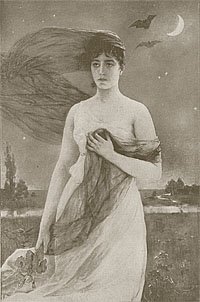
|
Otto Lingner is
one of the younger German artists of the Munich school, so many of whom are now coming
to the front, and his picture was one of the features of the Exhibition of 1892 at
the Bavarian royal city and art capital. It combines most
happily the qualities of imaginative conception and realistic execution, which
are demanded by the established standard of modern creative art.
|
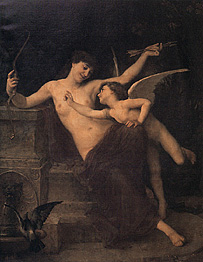
|
Emile Munier is
a French painter, born in Paris, and a pupil of A. Lucas and Bouguereau,
whose light and fanciful allegorial pictures enjoy an immense popularity. They
always tell their story clearly, and with a pleasantly humorous touch to it, are
well conceived and graceful in drawing, and agreeable in color. His "Cupid Disarmed" is
an instance in point, possessing as it does all the qualities which
have rendered the artist a favorite with the public. Venus, at sport with her tricksy
offspring, has playfully deprived him of the weapons of which he makes
such extensive and often wanton and mischievous use, and laughs at his ineffectual efforts to recover
them. Cupid deprived of his weapon is, indeed, rendered harmless, but the time has yet to come when the
goddess will actually execute her threat, and convert her jest to earnest.
|
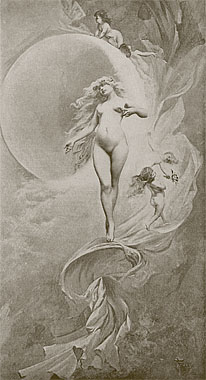
|
Quite another personification
of the same deity is
that given by the Spanish master Luis Falero, in "The Planet Venus." This is
one of the pictures of what might be called his astronomical series, which so
materially assisted in establishing his reputation as a great imaginative artist. In
his hand the goddess becomes a gloriously voluptuous creation, dazzling in the splendor
of her perpetual youth and beauty, which radiate a light like an electric flame.
|
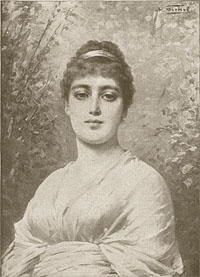
|
In "Summer" we have one of the beautiful ideal female types of Nathaniel Sichel, who
was introduced to the reader in part I.
|
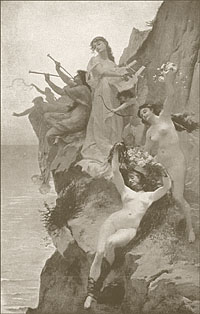
|
The Hierodules were one form of the
mythological type of enchantresses which we know in modern times as the Sirens.
As in all the representations of the legend in modern art, M. Edouard Rosset Granger
endows them with the beauty of perfect womanhood, whereas the ancient form given them was in one case that of
a mermaid, and in the other of half women and half birds. The artist is a Parisian, whose pictures in this field
have been numerous and very successful, both as works of art and in point of popularity.
In drawing, color, composition, and selection of subjects, his works show him to
have studied the school of Bouguereau, Boulanger, and Lefebvre to advantage.
The artist was, in fact, however, a student under Cabanel, Dubufe, and Mazerolle.
|

|
The Pierrette is a favorite ball masquerade with the modern Parisiennes, one
of whom is delineated, in character, by an appreciate brush in that of Alexander Jacques Chantron.
Chantron was born at Nantes and is a pupil of Picot.
|
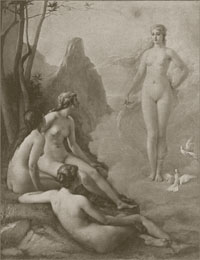
|
In "Venus Appearing to the Three Graces" is presented another characteristic example of
Emmanuel Benner,
|
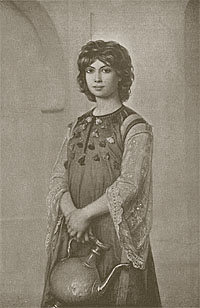
|
and the "Algerian Water-Girl," carry her brazen
water-pitcher to the palace fountain, is another specimen of the brush of Charles
Landelle.
|

|
"The Circassian's Toilette" is a brilliant work, in his best vein, of a
French artists of exceptional powers of their kind. Jacquesson de la Chevreuse,
who comes of a family of the old French nobility, devoted himself to art, and by
family influence and means was enabled to make extensive travels, whose results are profitably applied in
his pictures.
|
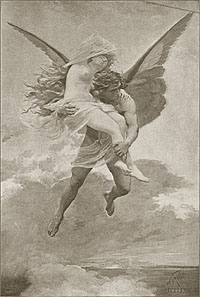
|
Santiago Arcos, the painter of "The Abduction of Chloris" by Boreas," is an artist of Spanish birth,
but a pupil in Paris of Bonnat and of Madrazo, and has his home in that city.
He became first known as a portrait painter, and enjoyed an
extensive patronage, but found time, in intervals between his commissions, to
execute pictures of a character of subject to demonstrate that he was an artist of
a fecund imagination and a free and powerful brush.
|
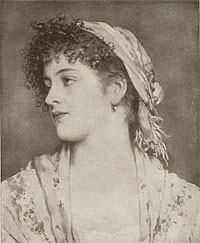
|
Eugen von Blaas is the elder
of two sons, both artists, of the eminent Austrian historical painter Karl Ritter von Blaas.
He was born in Italy, during his father's professional residence there, in 1843, and was at first
the pupil of his father, afterward studying at the Academies of Venice, Vienna, and Paris, and
traveling in Belgium and England. At all the academies in which he studied he was a winner of high prizes,
and he now resides permanently in Venice, where he finds most of the subjects of is pictures, of which
"Angiolina," a thorough type of a Venetian girl of the poorer class, is a good example. His more
ambitious works belong to the genre order. His brother, Julius B. Blaas, is a popular animal painter.
|
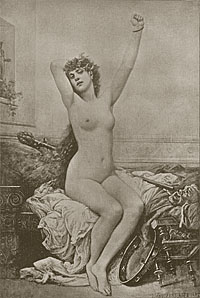
|
Louis Frederick Schutzenberger was born in Strasburg, while Alsace was
a French province, so he
ranks as a French painter. He was a pupil of Daguerre, and is an energetic draughtsman
and good colorist, with much original of ideas and execution. His pictures have gained for him
admission into the Legion of Honor. "The Drowsy Bacchante" gives an excellent
idea of his able and vigorous treatment of
the human figure, and his command of his material. The figure is a masterly study of form,
attitude and expression, and the original painting is a superb piece of color.
|
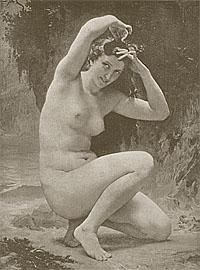
|
The greatest modern master of figure painting, at least in the academic sense,
William Adolphe Bouguereau,
was born at La Rochelle, in the Gironde, in 1825. When he was seventeen years old, he had saved enough
out of his earnings to carry him to Paris and support him there for a year. On this capital he became
a pupil of Picot, and in 1843 entered as a student into the Ecole des Beaux Arts,
until in 1850 he won the great prize scholarship known as the Prix de Rome,
which entitled him to study four years in Italy at the expense of the Government.
He became an Officer of the Legion of Honor. He was elected a member of the Institute. He was made
honorary member of all the great art academies of Europe. He was loaded with medals, until they formed a
unique collection in themselves.
|
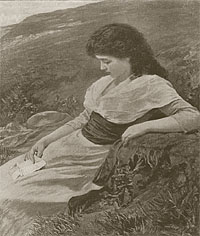
|
William Amberg is a native of Berlin, born in 1822, and,
beginning as a pupil of Professor von Herbig, later became a student under the eminent artist Karl Begas.
He then studied in Paris in the studio of Cogniet, worked among the galleries in Italy, especially in Rome
and Venice, to good effect, and then returned to his native country, where he found no lack of
patronage.
|

|
Jules Frederic Ballavoine, who is a Parisian by birth,
and has had his share of
Salon honors, is a pupil of Pils, who was the master of so many French artists of the
foremost talent. His "Lassitude" is a model in its department of his art.
|
|
|
|





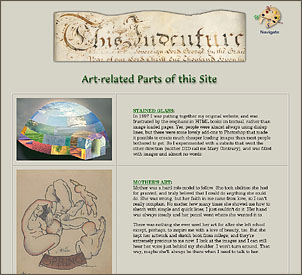



![]() Copyright © 2007, Mary S. Van Deusen
Copyright © 2007, Mary S. Van Deusen